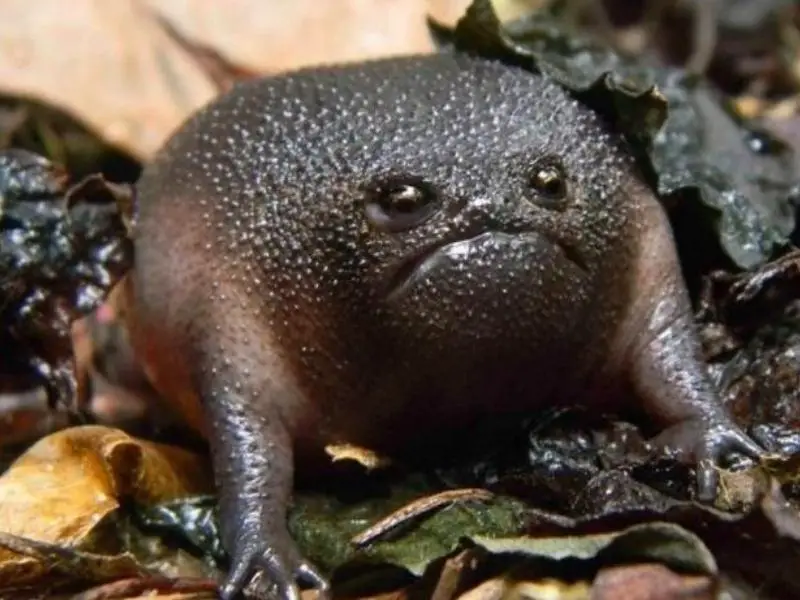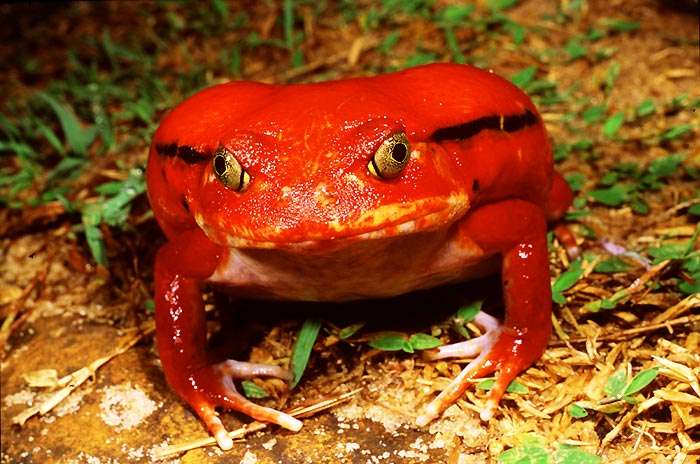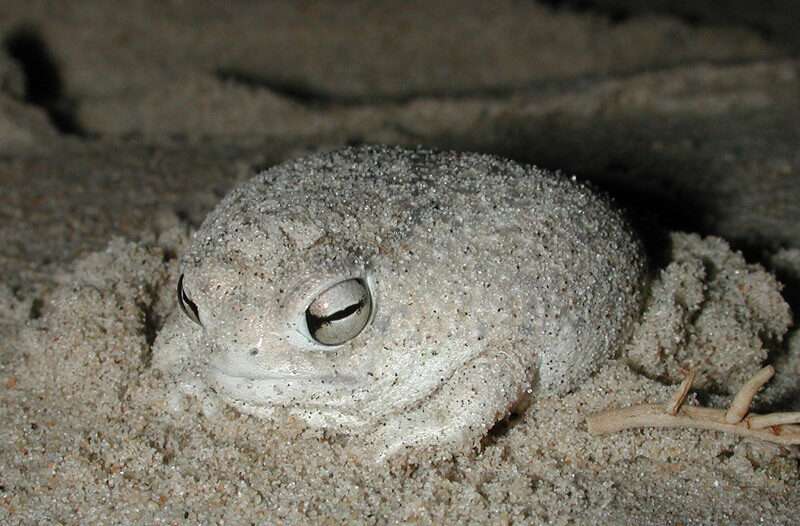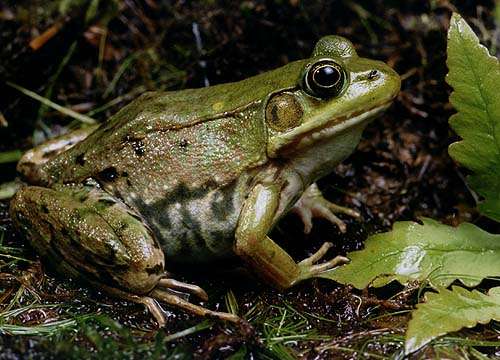
This species of frog in the Brevicipitidae family, often known as the black rain frog, plain rain frog, brown short-headed frog, and Tsitsikamma rainfrog. It is unique to South Africa’s southern coast.
Habitat
The species is exclusively found at elevations up to over 1,000 m on the southern slopes of the Cape Fold Belt from Swellendam to the Outeniqua Mountains (3,300 ft). This is a burrowing animal species that lives in fynbos and the edges of forests and is not dependent on open water. Due to their burrowing nature, they like to live close to sand mounds that have been moved.
Appearance
Short limbs and toes accompany the spherical body of Breviceps fuscus. Because its feet face inward, the frog can burrow considerably more successfully. They develop to a snout-vent length of around 40–51 mm (1.6–2.0 in). There are no warts on the skin, however there are pitting and noticeable widely spaced lumps. Typically, coloration is dark brown or almost black, with a ventrum that is somewhat paler and no colored markings. The frog has a striking appearance due to its squat body and relatively small legs.

Breeding
Males call from aboveground plants and within burrows. The vocalization is a brief (0.2 s) “chirp” with a 1.8 kHz dominant frequency. The eggs are laid inside of tunnels that are between 30 and 40 mm deep, with small (15 mm) entrances. Each nest contains 42–43 yellow eggs, each measuring 5 mm in diameter and enclosed in an 8 mm capsule.
Food
The Black rain toad is an insectivore, which means it consumes minute spiders worms, larvae, insects and insect like many other frogs do.
Keeping as Pet
Housing
In a terrarium or vivarium, black rain frogs can be kept in a setting that resembles their natural habitat. Since they don’t require a regular supply of open water, you don’t need an aquarium.
Regardless of the style of enclosure you select for them, they must have the right surroundings to survive. As burrowing creatures, there should be enough solid substrate for frogs to excavate burrows up to eight inches deep.
Enclosure
Consider that these frogs are very lively and not climbers before choosing an enclosure. They want sufficient horizontal room to move about. Therefore, a 10 gallon enclosure is suitable for these Black Rain Frogs.
Make sure the enclosure is tall enough to give burrowing animals the area they need to construct a tunnel and has a firm substrate for them to dig in.
Lighting
They don’t need dark light because they are nocturnal creatures. Only at night do they emerge from their burrows where they spend the day. So they do well in low light.
Temperature and Humidity
The health of the frog depends on the right temperature and humidity levels. The following tools are required to keep the grogs’ enclosure at an appropriate temperature and humidity level: UTH (under tank heater), Hygrometer and thermometer combined Thermostat.
The natural habitat of black rain frogs is the Mediterranean region, where it rarely rains. The area is mostly dry and not humid because the temperature ranges from 50 to 75 F and the humidity level is 55 to 80%.
Table





